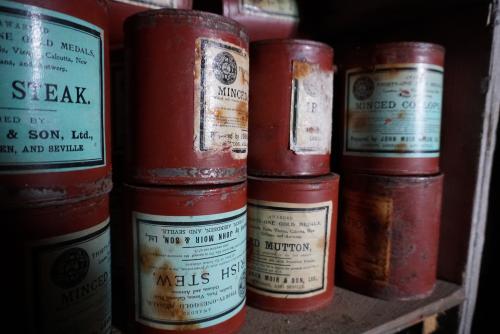"I thought, dear, that you would rather have a live ass than a dead lion."
-From a 1909 letter from Ernest Shackleton to his wife, Emily, on his decision to cut short his team's attempt to reach the South Pole.

During the winter of 1908, Cape Royds served as home to the 15 members of the British Imperial Antarctic Expedition, organized and lead by Ernest Shackleton. The Expedition was nicknamed after the Nimrod, the 40-year old sealing ship Shackleton acquired for transit to and from the continent. It was Shackleton's second trip to Antarctica - he was a member of Robert Falcon Scott's 1901-1904 Discovery Expedition - and his first as commander. The Nimrod Expedition is obscured by the later achievements of Admundsen, the tragedy of Scott's Terra Nova Expedition, and Shackleton's later monumental feat of survival in the Weddel Sea. However, when it returned to England in 1909, the Nimrod was the most successful Antarctic exploration to date, achieving the first ascent to the summit of Mt. Erebus, the discovery of the magnetic pole, and the farthest South anyone had ever been.

Like most expeditions from the "Heroic Age of Antarctic Exploration," The Nimrod Expedition pioneered the use of old and new technologies, with limited success. Shackleton's polar team used Manchurian ponies on their 1700mi/2735km roundtrip attempt (the ponies were shot and eaten). The party heading to the magnetic pole set out with an early automobile (it frequently overheated). The British postal service granted the Expedition the right to set up a post office and expedition members printed and bound a periodical during the long winter (fundraising schemes, these failed to earn the expected revenue after the Expedition's return). Other technologies such as the acetylene lights in the hut were installed with great success. Completely privately financed through loans and donations and initially unsupported by the British Government, the environment and lack of resources forced the members of the Nimrod Expedition to innovate constantly.

While I am no great student of architecture, I inferred a sense of egalitarianism when visiting the Expedition's prefabricated base at Cape Royds this week. In contrast to Scott's Cape Evans hut with its partitions and bunkbeds and departments, Shackleton's hut has much more of an open plan. Laboratory and darkroom space is carved out in a few corners and the expedition leader has his own private quarters behind a wall of plywood supply crates, but the walls are lined by cots separated only by the occasional privacy curtain, with foodstuffs and supplies mounted on shelves above. Though an experienced merchant sailor, Shackleton never served in the Royal Navy and perhaps because of this, Edwardian England's social boundaries were less rigorously enforced under his command, or at least they were not evident in the architecture. Restored by the Antarctic Heritage Trust to approximate the configuration in which the Expedition left it, the building serves as a living representation of the leadership style for which Shackleton is remembered.



Comments